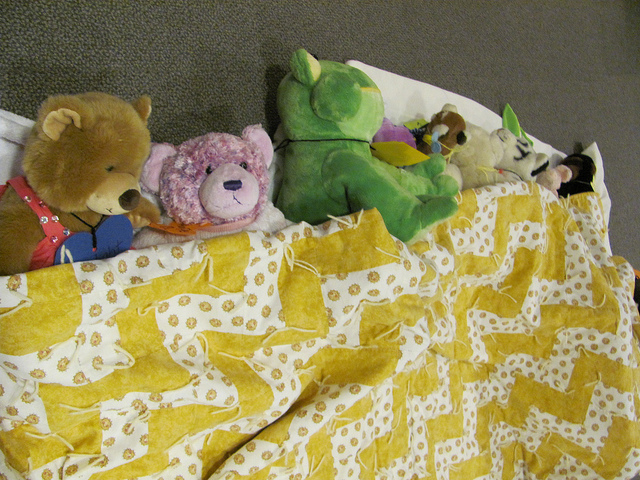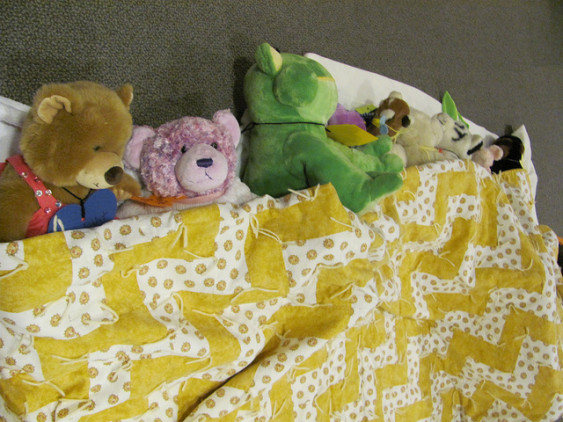Most Northwest parents trying to raise kids—in an urban setting or no—can appreciate the importance of space. There’s the avalanche of stuff that modern babies seem to require, from diapers to strollers to whatever jiggly thing puts them to sleep. Until parents of young children make a secret pact to stop handing out birthday goody bags, there will be rivers of useless stuff coming into our houses.
Urban families are often willing to trade compact living spaces for walkable neighborhoods, less brutal commutes, and quality time with each other. But there’s typically a limit to how small they’ll go.
Though some families with children certainly make it work, most prospective parents aren’t shopping for a studio or one-bedroom. If cities like Seattle and Portland are serious about offering families viable alternatives to expensive single-family neighborhoods or the suburbs, there must be multifamily housing units where they can live. But the private market simply isn’t building many affordable, family-sized apartments or condos.
That was one of the key findings from a 2011 housing report by the Seattle Planning Commission. A tiny fraction—just 2 percent—of market-rate apartment units in Seattle in 2009 had three or more bedrooms, as the chart below shows. Even worse, only half of those were affordable to low-income families.

Image by Seattle Planning Commission Family-Sized Housing Action Agendan
The picture is better for two-bedroom units, but still not great. Nearly three-quarters of the market-rate apartments in 2009 deemed “affordable” for people making 80 percent of the area’s median income (AMI) were studios and one bedrooms, which doesn’t ideally meet the needs of families with children. Plus, families trying to find larger units have to compete with roommates who can afford to split higher rents.
Whether a family needs two or three or four bedrooms is a debatable point. But perceptions about adequate living space still drive where they choose to settle. Duplex and triplexes are an important source of family-sized rental housing, but there’s simply not that much of that housing type available in Seattle.
Instead, most of Seattle’s family-sized housing is in single family neighborhoods, which are out of financial reach for many. Only 5 percent of the 3+ bedroom homes, condos, and townhomes sold in 2009 were affordable to low income families (making less than 80 percent of area median income, or AMI) and less than 30 percent were affordable to middle income families (making less than 120 percent of AMI.)
Those realizations prompted the Seattle Planning Commission to take a deeper dive into strategies to increase the city’s supply of family-sized housing. Its working definition is housing units with two or more bedrooms (recognizing that 3+ bedroom units are probably more important and desirable) that have family-friendly design features like ample storage and access to outdoor spaces where children can play.
Earlier this year, the commission released an entire action agenda full of recommendations, which I’ll summarize below. As Seattle evaluates its sometimes piecemeal policies around affordable housing and hopefully resolves to develop a more comprehensive housing strategy, this is the perfect time to elevate the need for family-friendly housing in its priorities.
Why focus on family-friendly housing?
It’s true that Seattle’s share of households with children has historically been smaller than other cities and surrounding suburbs. But recent trends suggest Seattle is becoming increasingly attractive to families. It’s doing a better job of holding onto kids than the rest of the state. Student enrollment in Seattle Public Schools is surging. The city is bucking broad demographic trends and actually growing the share of its population made up of children.
Building urban neighborhoods that are welcoming to families offers a host of potential benefits—making Seattle more attractive to a new generation of job seekers, boosting economic competitiveness, cutting down on traffic, reducing sprawl and climate pollution. And parents who live closer to their jobs get to spend less time commuting and more time with their families.
Housing is just one piece of the puzzle in building family-friendly neighborhoods. But it’s an important one, and size does appear to matter. Research from downtown Vancouver BC suggests that the single biggest factor that compels families with children to move is feeling like they don’t have adequate space—more so than concerns about safety or long wait lists for neighborhood daycares or schools.
Market research based on Portland families potentially interested in moving downtown also found that home features like nice countertops, parking spaces, and access to play areas were less important than the basic need for a home large enough to accommodate a family at an affordable price. Unfortunately, none of the real-world Portland condo or apartment projects the study evaluated hit that sweet spot.
How can we build more?
The planning commission argues that in order to meet the looming housing needs of low- and middle-income families, Seattle needs to increase the supply across different neighborhoods—from single-family neighborhoods to dense urban centers. (Note: While the planning commission’s report doesn’t address it, this recent piece in the Atlantic’s CityLab by Seattle developer A-P Hurd explains how outdated parking requirements are huge barriers to developing family-friendly housing.)
Here are some of the top suggestions from the commission’s “Family-Sized Housing Action Agenda“:
- Allow for more flexibility in single-family neighborhoods to build courtyard housing, duplexes and triplexes and cottage housing. Focus on areas with frequent, reliable transit.
- Allow appropriate lots to have both a detached accessory dwelling unit (i.e. backyard cottage) and an attached ADU (i.e. mother-in-law apartment)
- Increase the amount of city land zoned for lowrise and midrise multifamily housing, since these are great places to build family-friendly options like rowhouses, townhomes, and apartments clustered around green spaces
- Incentivize developers to build 2 and 3+ bedroom units that are appealing to families by increasing development capacity or granting tax exemptions
- Use affordable housing revenues to preserve the city’s stock of affordable 2 and 3+ bedroom apartments
- Make it easier for developers to incorporate outdoor play spaces in multifamily developments by adjusting green space incentives
- Allow innovative building design and construction techniques, especially ones that allow families to knock out walls or reconfigure living spaces as their needs evolve
- Create “residential cores” with wider sidewalks, pedestrian-friendly elements, and quiet spaces that appeal to families with children within Seattle’s most urban neighborhoods
- Include a strong priority for families with children in affordable housing programs
- Work with the Seattle Public Schools to expand capacity in places where the city would like to see families live, especially around transit centers
- Research effective practices in other cities, from San Francisco’s and Vancouver BC’s requirements to provide family-friendly units to Portland’s efforts to allow courtyard housing
We’ll look at some of these ideas in more detail in future posts, but they’re a good place to start a discussion. And they’re a good reminder that “affordable” housing designed for singles or employees isn’t the same thing as homes that meet the needs of low- and middle-income families.










Jiek
While I support the goal of making Seattle more family-friendly and many of the policies you suggest are just common sense, requiring or incentivizing 2 and 3 bedroom units will not work until there are enough affordable units for singles (unless of course you require that only families can live in large units). I would love to see some numbers on how many roommates are currently living in larger units, how many would prefer a studio or 1-bedroom if they could afford it, and our trajectory for providing those people with affordable units.
Jennifer Langston
I would love to see data on how many roommates vs. families are living in larger units, but I haven’t run across that yet. Anyone?
Jennifer Langston
I’m also not clear on why single people who need affordable housing should be prioritized over families with children, other than it’s cheaper to provide smaller units. It seems like we should be aiming to serve the entire spectrum of households who need it.
Matt the Engineer
Although 50% of Seattle’s housing units are in single family zones (i.e. they are single family houses), the average household size is just barely over 2. This means those SF homes are often taken up by singles or couples.
We have plenty of multi-room units in Seattle, we just call them “houses”. They take up more than 62% of our land area, and they are so overbuilt compared to single room homes (i.e. apartments/condos) that they’re mostly filled with 1 and 2 person households.
But why on earth would 1 and 2 person households be buying up SF homes. Do they love yards? No – it’s because multifamily zoning is only 13% of our land area, and supply is so severely restricted that you can buy a full house with a yard and your own land for not much more than a tiny condo.
Build more condos and apartments, and more of the 1 and 2 person households will buy/rent them, leaving more room for families in houses.
RDPence
Under fair housing laws, how can anyone discriminate against a group of 3 roommates vs. a family who really needs that 3-bedroom rental? Landlords can’t legally discriminate on the basis of marital status or family structure. Low-income families will continue to struggle for adequate housing.
And developers and planners should also recognize the need for outdoor play space for kids, and not just a concrete deck covered in astroturf but space like the suburban back yard I grew up with. Or better, a real park within reasonable walking distance (max. 10-minute walk).